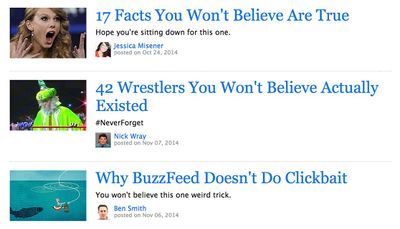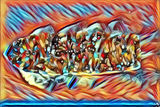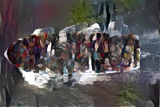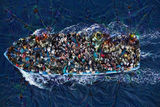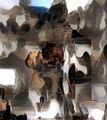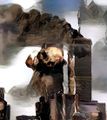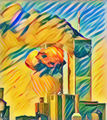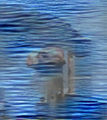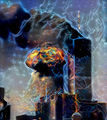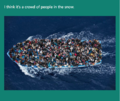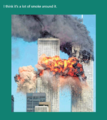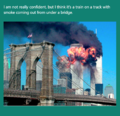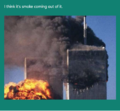Difference between revisions of "User:0911497/Graduation"
| Line 52: | Line 52: | ||
<br> First try out to generate images by using the [https://deepdreamgenerator.com deep dream program ] from google.<br> | <br> First try out to generate images by using the [https://deepdreamgenerator.com deep dream program ] from google.<br> | ||
| − | <gallery <gallery widths= | + | <gallery <gallery widths=160px heights=160px mode=nolines > |
File:Originalgen.jpg | Original | File:Originalgen.jpg | Original | ||
File:Gen.jpg | File:Gen.jpg | ||
Revision as of 07:43, 12 March 2019
Contents
INFO
Karlijn den Hoedt
0911497
Graphic design
projects I have worked on before
Digital Craft 2018: Cybernetics
QUESTION
- How are certain groups of people represented within the news? (think about the refugee, the terrorist, etc)
- What does the representation within the news tell us about our society?
- creates the news fear within our society? (Ruben paters - facts agains fear)
subvragen
- What are clickbaits?
- Fake news?
- is news objective?
- should the news change?
- how does machine learning work and can it give me something extra? (could it make a new terrorist face? could it give us new news content? news generator? )
EXPIRIMENTS?
- maak een project plan !!!
- pas het nieuws grid toe op andere programma’s/ tijdschriften?
- spelen met beeld binnen nieuwsuitzending. Camera angles/ inzoomen/uitzoomen.
- plaats hetzelfde nieuws uit verschillende werelddelen naast elkaar.
- kijk een nieuwsuitzending en beschrijf de stereotypes. 1x nieuws uit nederland zonder geluid 1x nieuws uit een ander land waarbij taal niet te verstaan is
- bekijk beeldanalyse hans aarsman
-
CLICKBAITS
Clickbait is a pejorative term for web content whose main goal is to get users to click on a link to go to a certain webpage. Clickbait headlines typically aim to exploit the "curiosity gap", providing just enough information to make readers curious, but not enough to satisfy their curiosity without clicking through to the linked content.
From a historical perspective, the techniques employed by clickbait authors can be considered derivative of yellow journalism, which presented little or no legitimate well-researched news and instead used eye-catching headlines that included exaggerations of news events, scandal-mongering, or sensationalism.
By 2014, the ubiquity of clickbait on the web had begun to lead to a backlash against its use. Satirical newspaper The Onion launched a new website, ClickHole, that parodied clickbait websites such as Upworthy and BuzzFeed, and in August 2014, Facebook announced that it was taking technical measures to reduce the impact of clickbait on its social network, using, among other cues, the time spent by the user on visiting the linked page as a way of distinguishing clickbait from other types of content. Ad blockers and a general fall in advertising clicks also affected the clickbait model, as websites moved towards sponsored advertising and native advertising where the content of the article was more important than the click-rate.
Clickbait has also been used to political ends, and in this respect has been blamed for the rise of post-truth politics. Katherine Viner, editor-in-chief at The Guardian wrote that "chasing down cheap clicks at the expense of accuracy and veracity" undermined the value of journalism and truth. Emotional subjects with stark headlines are widely shared and clicked, which resulted in what Slate described as an "aggregation of outrage" and a proliferation of websites across the political spectrum – including Breitbart News, Huffington Post, Salon, Townhall and the Gawker Media blogs – which profited by producing shareable short-form pieces offering simple moral judgements on political and cultural issues.
GENERATING IMAGES - DEEP DREAM
First try out to generate images by using the deep dream program from google.
IMAGE RECOGNISING - CAPTIONBOT
I asked myself the question if a computer can read a photo/ a framed event/ and the emotion or meaning of it. I did this on a online generator which is called CAPTIONBOT
The result was not as good as I hoped because the bot only recognised presidents and made weird captions for the other pictures. But I did found a lot of free open source image recognition programs on GitHub which I want to try out for better results.
IMAGE RECOGNISING - DENSECAP
the picture is taken in the day. the two <unk>. the curtains are white. a building is in the background. a plane in the sky. the sky is blue. the <unk> are white. a window on the wall. a brown and white striped pole. a red and black chair. a green and white building. a pink pole. the building is white. the window is open. a blue blanket.
the smoke is red. the sky is blue. the photo is in the background. the wall is white. the buildings are in the background. the building is green. the sky is white. a building in the background. the sky is clear. a building in the background. a green and white striped box. the buildings are in the background. a large green tree. a green and white box. the trees are green.
a picture of a building. a large stone building. a white table. a man holding a statue. a palm tree. a black pole. a building is in the background. a yellow and yellow clock. a tall building. the sky is clear. the building is made of wood. the wall is white. a white pole. a tall pole. the table is white.
a picture on the wall. a man wearing a black jacket. a picture on the wall. a man is sitting on a bed. a person sitting on a bench. the mans shirt is black. a picture on the wall. a black backpack. a man is holding a wii. the mans pants are black. the man is wearing black pants. the head of a man. the hand of a man. a black shoe. a black shoe.
a woman is holding a camera. a woman is holding a horse. a woman is holding a horse. a woman holding a horse. a woman and a woman. the head of a man. a man wearing a black jacket. a white hat. a man wearing a black jacket. the pants are white. a white pole. a woman is wearing a black jacket. the helmet is black. the man is wearing a white shirt. the hat is red.
WRITERS / PHILOSOPHERS / JOURNALISTS / ORGANISATIONS
Guy Debord
Bellycat
Whoever Controls the Media, the Images, Controls the Culture | Min Kim | TEDxLehighU
they offer us things we know we will enjoy and shield us from looking at thinks that might make us use their platform less. They feeds in on our passions, our insecurities (fear? )our ego, and every facet of our complicated identity. in order for us to feel self righteous, comfortable and satisfied.
direct inexperience is the best experience that you can have. No tv or media that shows you the world but you who discovers them.
Henri Frankfort
Before Philosophy: The Intellectual Adventure of Ancient Man
Such a unified spirit was born of the sense of common peril. The common desire for security need not have survived after the Egyptian Empire extended the military frontier of Egypt well into Asia and thus removed the peril from the immediate frontier. That should have given the external security which would relieve the need for communal solidarity. However, it was a resdess age, and there were perils on the distant horizon which could he invoked to hold the community together, since unity was to the advantage of certain central powers. When the threat of the Hyksos had subsided, the threat of the Hittites appeared and endangered the Asiatic Empire of Egypt. There- after came the Sea Peoples, the Libyans, and the Assyrians. A fear psychosis, once engendered, remained present. And there were forces in Egypt which kept alive this fear psychosis in order to maintain the unified purpose of Egypt.
edmund burke
No passion so effectually robs the mind of all its powers of acting and reasoning as fear.
Plato
Imprisonment in the cave
Plato begins by having Socrates ask Glaucon to imagine a cave where people have been imprisoned from birth. These prisoners are chained so that their legs and necks are fixed, forcing them to gaze at the wall in front of them and not look around at the cave, each other, or themselves (514a–b).[3] Behind the prisoners is a fire, and between the fire and the prisoners is a raised walkway with a low wall, behind which people walk carrying objects or puppets "of men and other living things". The people walk behind the wall so their bodies do not cast shadows for the prisoners to see, but the objects they carry do ("just as puppet showmen have screens in front of them at which they work their puppets". The prisoners cannot see any of what is happening behind them, they are only able to see the shadows cast upon the cave wall in front of them. The sounds of the people talking echo off the walls, and the prisoners believe these sounds come from the shadows.
Socrates suggests that the shadows are reality for the prisoners because they have never seen anything else; they do not realize that what they see are shadows of objects in front of a fire, much less that these objects are inspired by real things outside the cave which they do not see.
Departure from the cave
Plato then supposes that one prisoner is freed. This prisoner would look around and see the fire. The light would hurt his eyes and make it difficult for him to see the objects casting the shadows. If he were told that what he is seeing is real instead of the other version of reality he sees on the wall, he would not believe it. In his pain, Plato continues, the freed prisoner would turn away and run back to what he is accustomed to (that is, the shadows of the carried objects). He writes "... it would hurt his eyes, and he would escape by turning away to the things which he was able to look at, and these he would believe to be clearer than what was being shown to him."
Plato continues: "Suppose... that someone should drag him... by force, up the rough ascent, the steep way up, and never stop until he could drag him out into the light of the sun."[3] The prisoner would be angry and in pain, and this would only worsen when the radiant light of the sun overwhelms his eyes and blinds him.
"Slowly, his eyes adjust to the light of the sun. First he can only see shadows. Gradually he can see the reflections of people and things in water and then later see the people and things themselves. Eventually, he is able to look at the stars and moon at night until finally he can look upon the sun itself (516a)."[3] Only after he can look straight at the sun "is he able to reason about it" and what it is (516b).[3] (See also Plato's Analogy of the Sun, which occurs near the end of The Republic, Book VI.[4][5])
Return to the cave
Plato continues, saying that the freed prisoner would think that the world outside the cave was superior to the world he experienced in the cave; "he would bless himself for the change, and pity [the other prisoners]" and would want to bring his fellow cave dwellers out of the cave and into the sunlight (516c).[3]
The returning prisoner, whose eyes have become accustomed to the sunlight, would be blind when he re-enters the cave, just as he was when he was first exposed to the sun (516e).[3] The prisoners, according to Plato, would infer from the returning man's blindness that the journey out of the cave had harmed him and that they should not undertake a similar journey. Plato concludes that the prisoners, if they were able, would therefore reach out and kill anyone who attempted to drag them out of the cave (517a).[3]
Symbolism[edit]
"Plato's Cave Allegory" by Markus Maurer
The allegory contains many forms of symbolism used to describe the illusions of the world. The cave represents the superficial world for the prisoners. The chains that prevent the prisoners from leaving the cave represent ignorance, meaning the chains are stopping them from learning the truth. The shadows that cast on the walls of the cave represent the superficial truth, which is an illusion that the prisoners see in the cave. The freed prisoner represents those in society who see the physical world for the illusion that it is. The sun that is glaring the eyes of the prisoners represents the real truth of the actual world
INSPIRATION IMAGES/PROJECTS
INSPIRATION
References:
[1]
